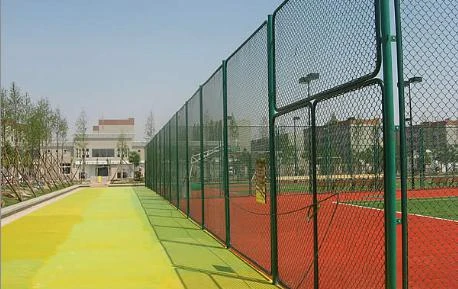 TEL:
+86-13102802206
TEL:
+86-13102802206
 Email:
fencenetting@china.com
Email:
fencenetting@china.com
 Language
Language
 TEL:
+86-13102802206
TEL:
+86-13102802206
 Email:
fencenetting@china.com
Email:
fencenetting@china.com
 Language
Language


The Versatile Applications of Chicken Wire Netting
Chicken wire netting, also known as poultry netting or hexagonal wire mesh, is a simple yet versatile material that has found its way into various applications beyond its original purpose. Designed initially to provide a barrier for chickens and other poultry, this type of wire mesh is made from thin, flexible galvanized steel or coated wire, typically featuring hexagonal openings. Its affordability, lightweight nature, and easy manipulation make it a popular choice among farmers, gardeners, and DIY enthusiasts alike.
One of the primary uses of chicken wire netting is in livestock farming. When it was first introduced, it served as an effective enclosure for chickens, protecting them from predators while allowing adequate airflow and sunlight. However, its utility doesn’t end with poultry. Farmers have adapted it for use with other animals, such as rabbits, goats, and even small livestock. It provides a sufficient barrier to keep the animals in one area while allowing them to enjoy grassy pastures and exercise.
In the realm of gardening, chicken wire netting is invaluable for protecting plants from herbivorous pests. Many gardeners use it to create protective barriers around young plants or vegetable patches, preventing rabbits, deer, and other animals from feasting on their crops. Its flexible design allows for easy installation, whether by wrapping it around stakes, forming cages, or building fences. Additionally, chicken wire can support climbing plants, such as cucumbers and peas, by providing a structure for them to latch onto as they grow.
Moreover, its applications extend beyond agriculture and gardening. In crafting and home improvement projects, chicken wire netting is often used for decorative and functional purposes. For instance, it can be fashioned into unique wall art or used as a material for photo displays. Artists and DIY enthusiasts appreciate its aesthetic potential, often incorporating it into shadow boxes, wreaths, and other creative endeavors.

Chicken wire netting also plays a significant role in home security and safety. Homeowners utilize it to create barriers around swimming pools, keeping children and pets safe from accidental falls. In addition, it can serve as a deterrent against rodents and other small animals seeking entry into attics or basements, effectively sealing off potential entry points.
When it comes to construction, chicken wire netting is commonly used as a reinforcement material in various plastering projects. Its strength and flexibility provide a strong base for plaster, making it an essential component in many building applications. It can also be used to reinforce concrete structures, enhancing their durability and strength.
However, while chicken wire netting has its many uses, it is essential to consider a few limitations. The open weave design may not effectively contain larger animals without added support, and the thin wire can be prone to rusting if not properly coated. Nonetheless, with appropriate care, these limitations can easily be mitigated.
In conclusion, chicken wire netting is a multifaceted material that proves to be an invaluable asset across various fields. From agriculture and gardening to home improvement and security, its versatility is unmatched. Whether you’re a farmer looking to protect your livestock or a gardener eager to safeguard your plants, chicken wire offers a practical solution. Its ability to adapt to different needs underscores its enduring appeal and relevance in modern society. Embracing the potential of chicken wire netting can lead to innovative solutions, making it a staple in both rural and urban settings.